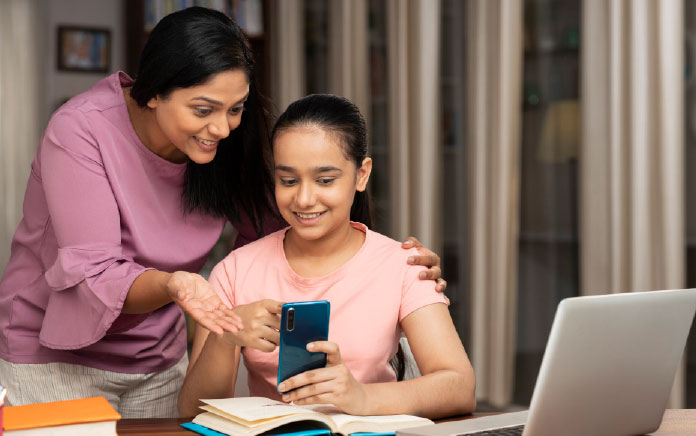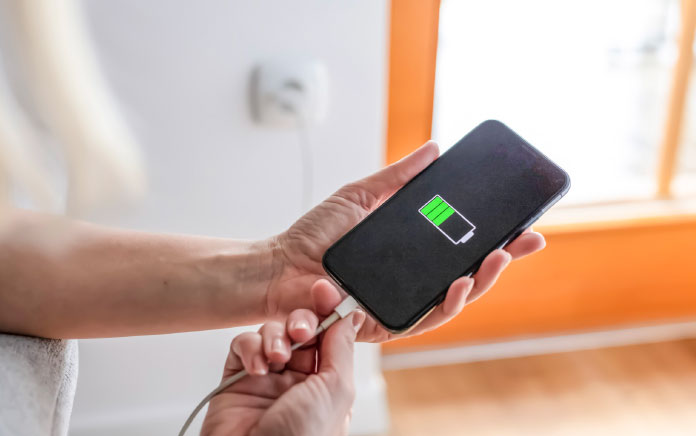An alarming two-thirds of parents say parenting is harder today than 20 years ago, citing the impact of social media and smartphones. Ouiam El Hassani shares her tips for starting a conversation about technology with kids.
As we’re rearing a new generation that will grow up almost entirely online, parents are met with a fresh set of challenges as kids interact with screens at school, play and home. Many don’t even know where to begin when it comes to creating safer online and digital experiences for their kids.
It’s time we rethink how we talk to our kids about technology—and recognise that it’s not just one conversation we need to have, but an ongoing, open dialogue about how kids can protect themselves online. Setting parental controls on your kids’ favourite apps can be helpful, but having an open dialogue about technology’s role in their daily lives will take them much farther.
Here’s your guide to getting the conversation started:
1. Keep it light and engaging.
Start by choosing a topic that will interest and engage your kid. If you are concerned with how much time they spend online, realise that it may be more important to understand precisely how and why your kid spends that time online. Kids are first introduced to the internet through videos (as well as streaming TV/music, games) or through school, and primarily through mobile devices and apps to start. Many apps are designed with algorithms and strategic gamification to suck us all in, and kids are no exception.
 Pick a device that resonates with your kid and start by using simple language to explore how your kid feels about it and explain its risks and benefits. Learning about the online platforms your kid uses and using them yourself can go a long way in instilling trust and communication with your family. Humour can be a great way to keep this dialogue positive so the conversation feels less daunting and your kid remains engaged. You can do this by acting out specific scenarios or using humorous examples to illustrate the importance of online safety.
Pick a device that resonates with your kid and start by using simple language to explore how your kid feels about it and explain its risks and benefits. Learning about the online platforms your kid uses and using them yourself can go a long way in instilling trust and communication with your family. Humour can be a great way to keep this dialogue positive so the conversation feels less daunting and your kid remains engaged. You can do this by acting out specific scenarios or using humorous examples to illustrate the importance of online safety.
2. Make it age-appropriate.
It’s essential to consider your kid’s age and developmental level, as younger kids may need simpler explanations, while older ones can grasp more complex ideas. For example, parental controls may differ for various ages. It’s tempting to depend on parental controls to help limit your kid’s online time or block certain websites and online activities, but the truth is that no tool can ever completely protect them online. Instead, it’s more important to become comfortable talking with your kids about online safety, shared family rules—and most importantly—why those rules exist. As kids learn how to manage themselves online, figure out a plan to reward them by easing some restrictions.
 If your kids are using social media, talk to them about how using social media makes them feel. Nobody feels great after being stuck in the “doom-scroll” for too long. Bringing this fact to light can help them recognise the impacts.
If your kids are using social media, talk to them about how using social media makes them feel. Nobody feels great after being stuck in the “doom-scroll” for too long. Bringing this fact to light can help them recognise the impacts.
It is also important to discuss what type of information is safe to share online. A practical way to protect kids’ privacy is by turning off location services for apps or changing the settings to ‘only operational while using.’ This prevents apps from gathering data on the places you visit.
Lastly, make sure you are checking privacy and security settings on other devices, not just phones. Do your kids have a school-issued device? Take the time to look into those settings too and don’t be afraid to ask teachers and school administrators how the tools and software used in classrooms handle students’ data.
3. Keep it ongoing.
The internet can be a great place for families, but teaching your family how to enjoy the wonders of the web safely requires a degree of consistency in practicing agreed-upon safety measures and developing protective habits.
 Being vigilant in setting regular “tech talks” is one of the most effective ways to protect your family from online risks while creating space for your family to discover the world, connect with others and have fun online together.
Being vigilant in setting regular “tech talks” is one of the most effective ways to protect your family from online risks while creating space for your family to discover the world, connect with others and have fun online together.
4. Model good digital behaviour.
You’ll want to lead by example so your kids know the behaviour they should emulate when engaging with technology. Consider instituting ‘charging breaks’ or curfews for devices for the family and discuss turning off notifications that prompt you to re-engage online. Screen time often gets a bad rap, but as we embrace a more online society, it’s helpful to re-evaluate the role of the internet in all of our lives. Implementing device breaks when the whole family should be present will empower your kids to model this behaviour.
 It’s also important to grow your own knowledge about engaging safely online. All connected devices are potentially vulnerable and it’s essential to understand the potential risks before bringing new connected devices into your home. Doing this research will model to your kids how to be responsible and informed technology users.
It’s also important to grow your own knowledge about engaging safely online. All connected devices are potentially vulnerable and it’s essential to understand the potential risks before bringing new connected devices into your home. Doing this research will model to your kids how to be responsible and informed technology users.


































